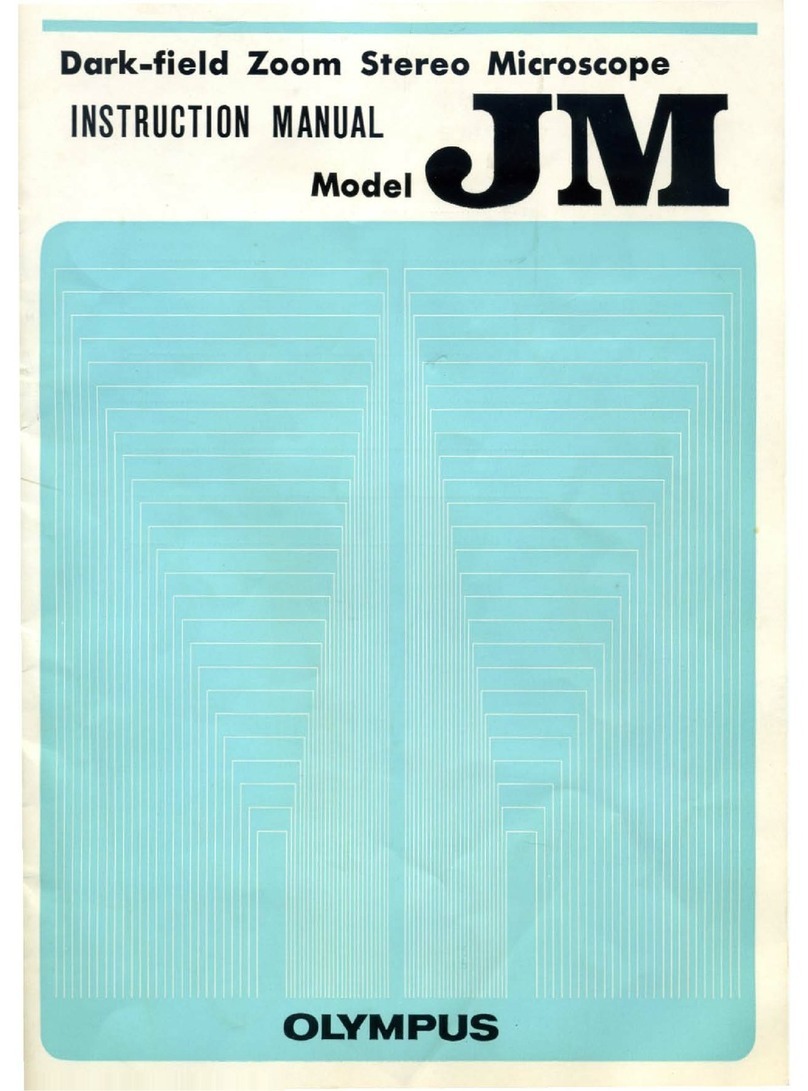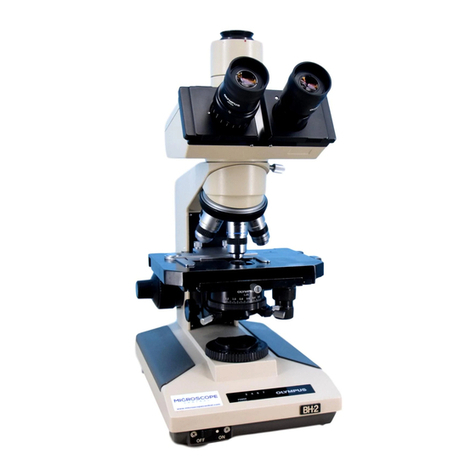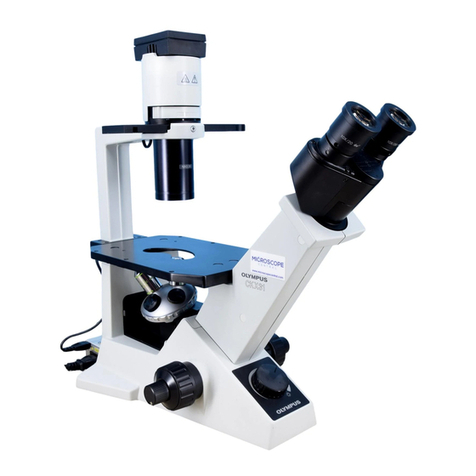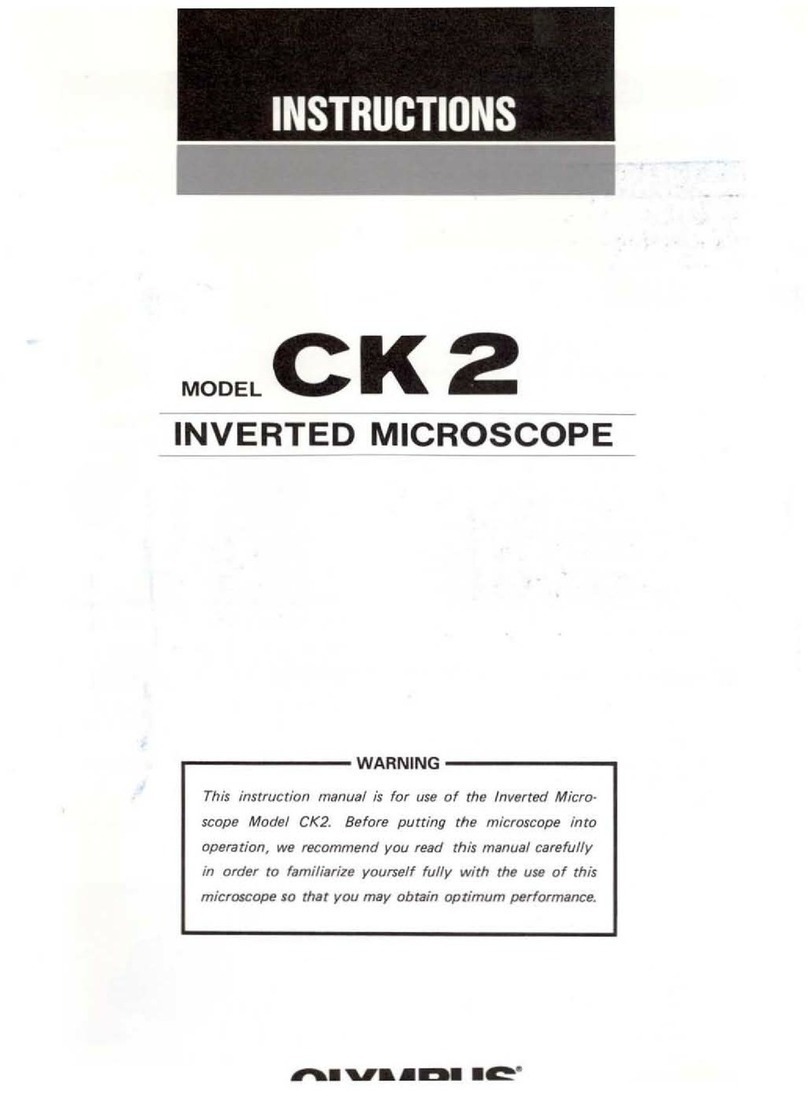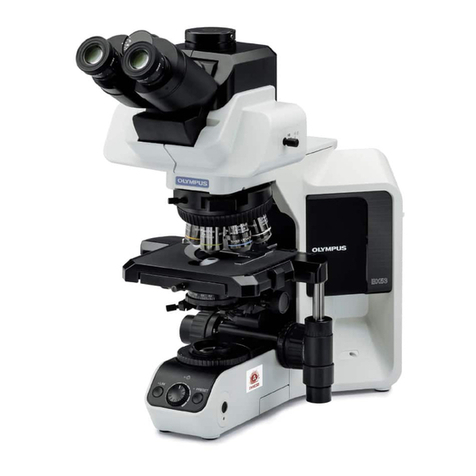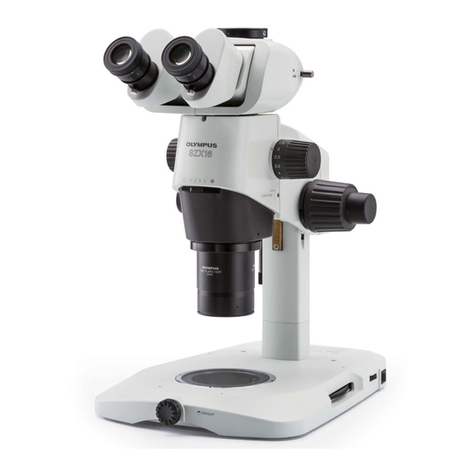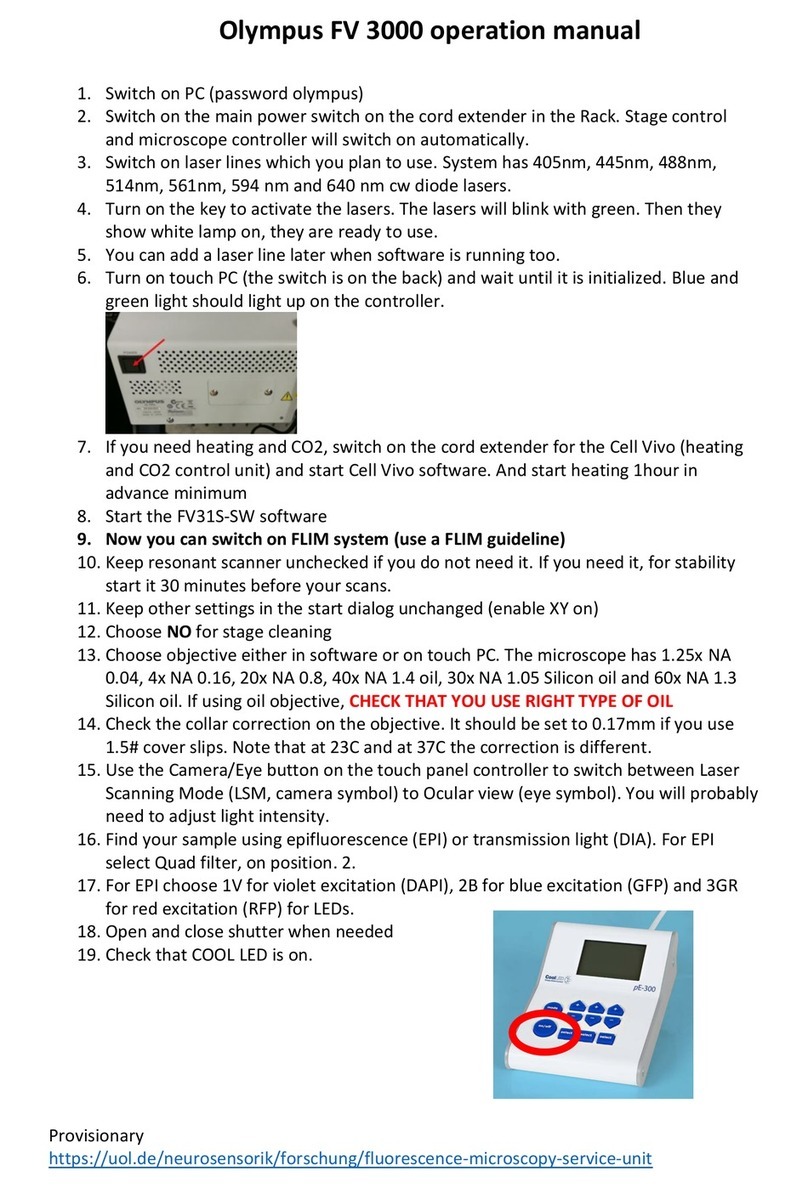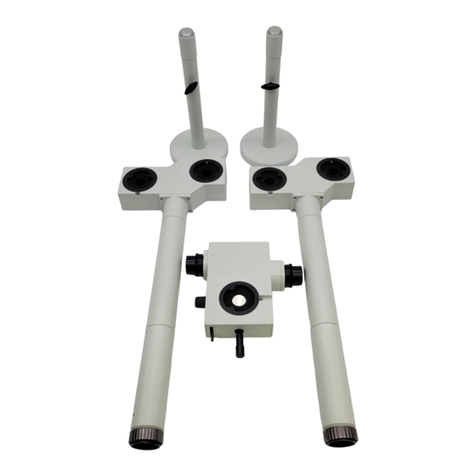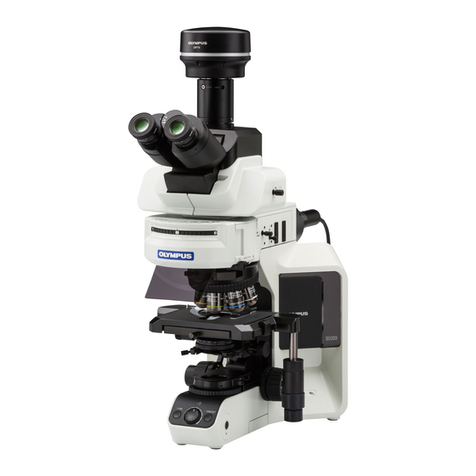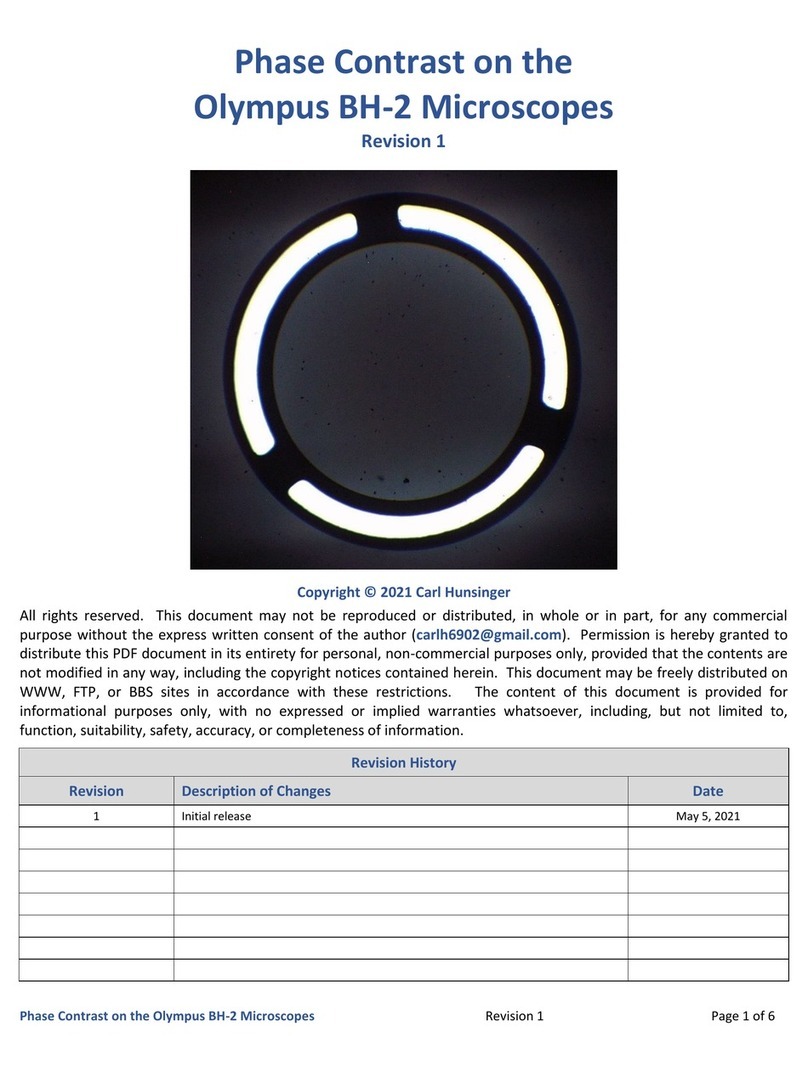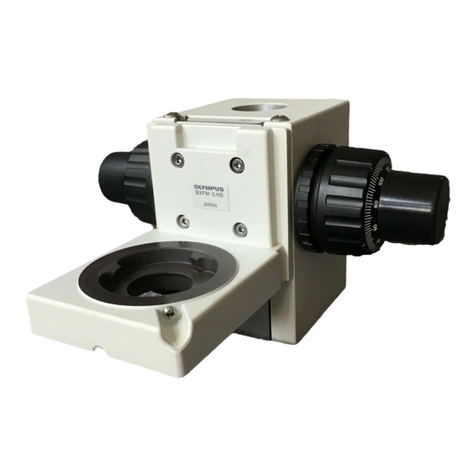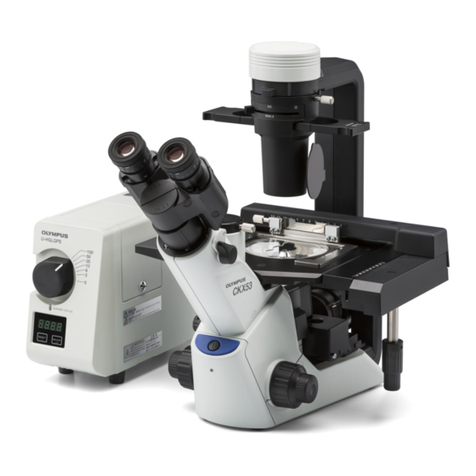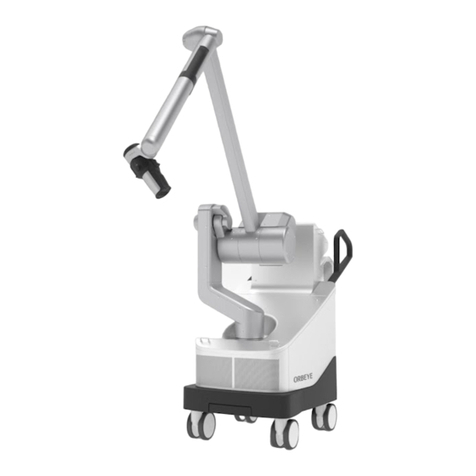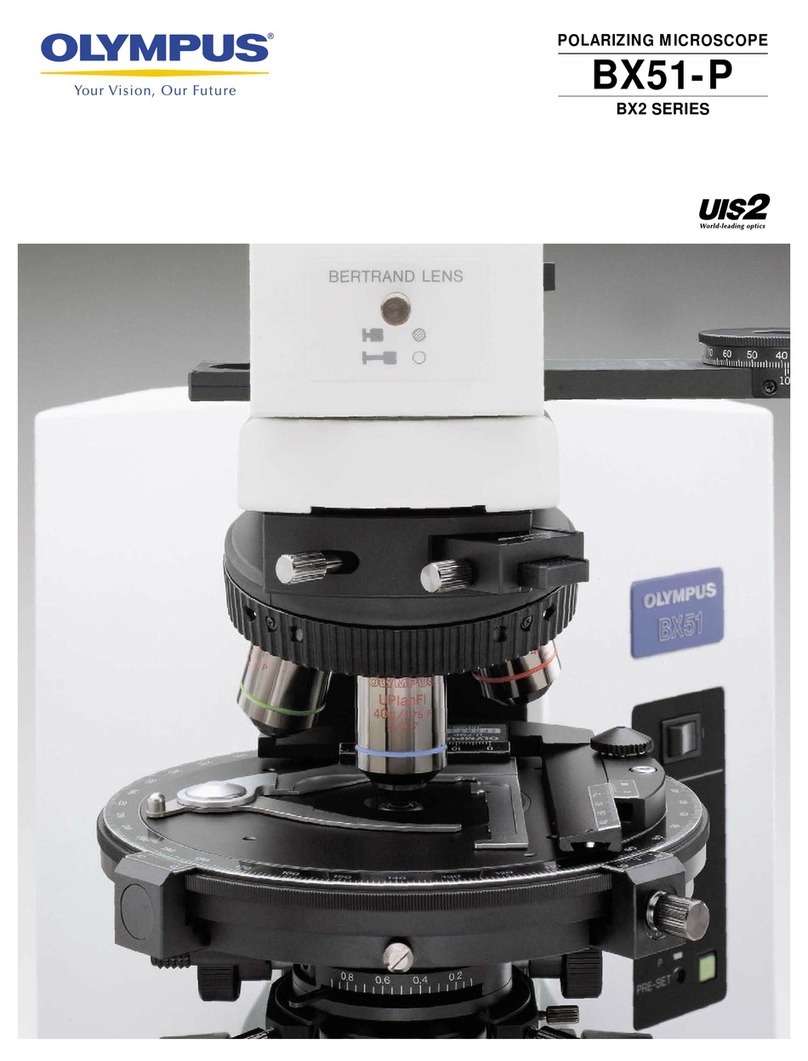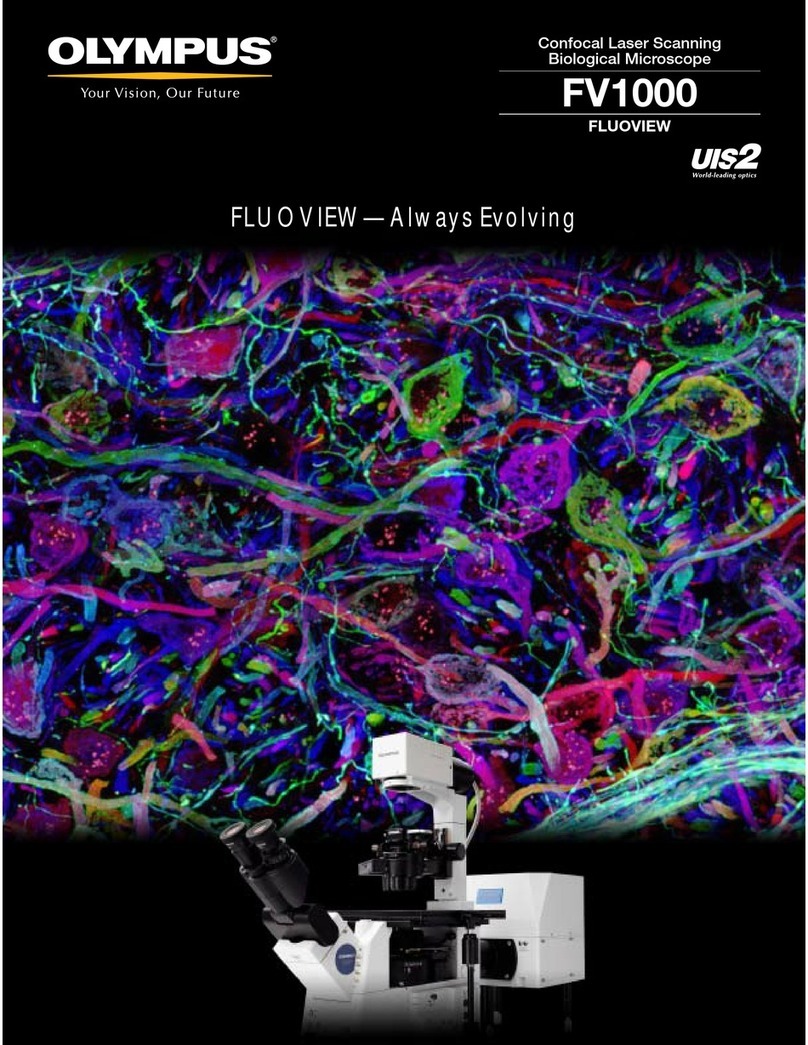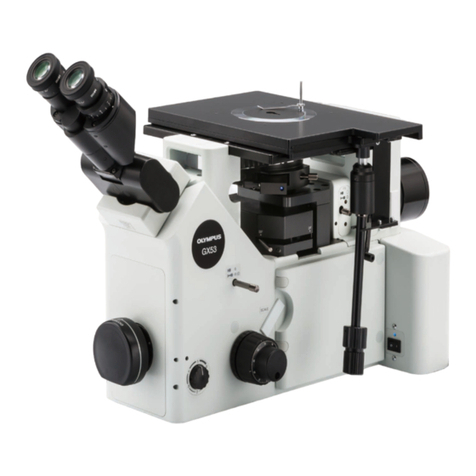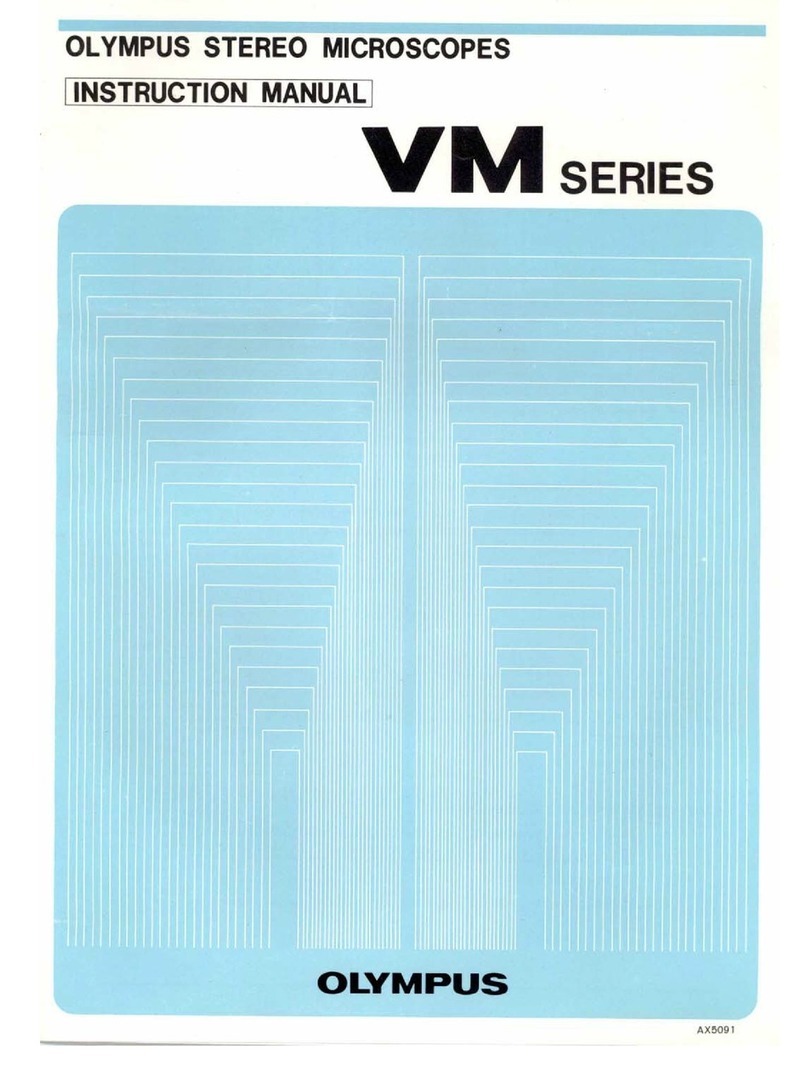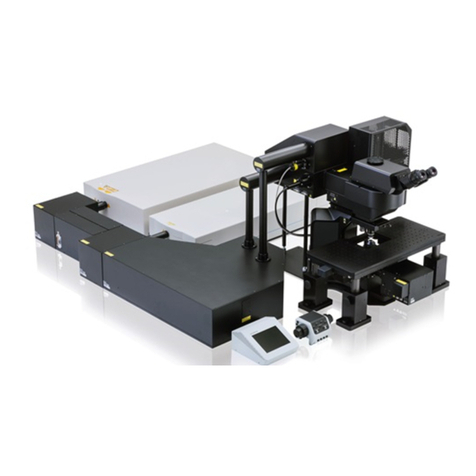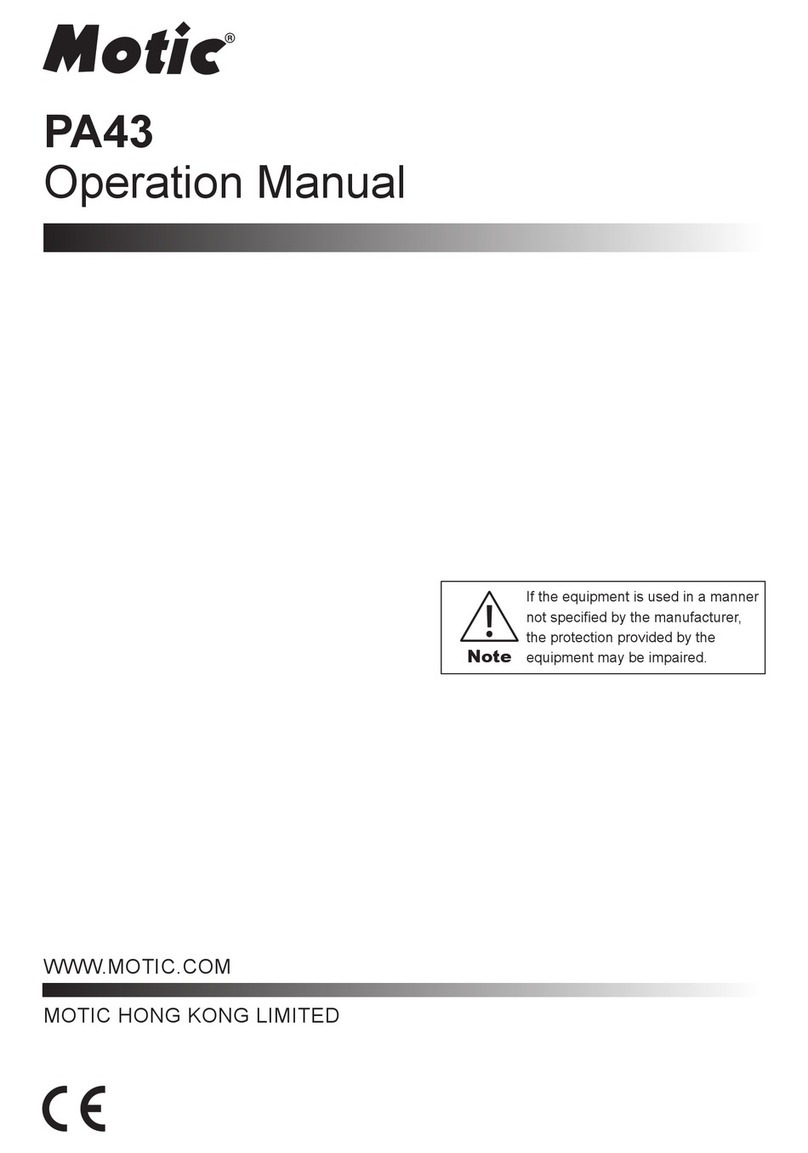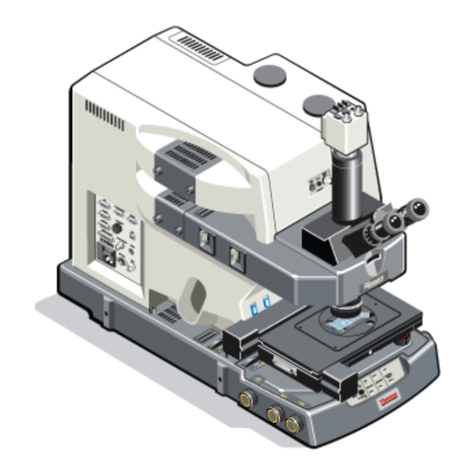This instruction manual has been written for the use of the Olympus System Microscope Model
BHT.
It is recommendedthat you read the manual carefully inorder to familiarize yourself fully
with the use of the microscope, so that you can obtain optimum performance from it.
IMPORTANT
0
bserve the following points carefully:
Operation
1.
Always handle the microscope with the care it deserves, and avoid abrupt motions.
2.
Avoid the use and maintenance of the microscope in direct sunlight, high temperature and
humidity, dust and vibration.
3.
Only use the tension adjustment ring for altering the tension of the coarse adjustment
knobs. (Donot twist the two coarse adjustment knobs in opposite directions simultaneous-
ly, as this will cause damage.)
4.
Make sure that the voltage selector switch on the base plate is set to conform with the local
mains voltage.
5.
Make it a point of grounding the microscope to prevent electric accidents.
Maintenance
1.
Lenses must always be kept clean. Carefully wlpe off oil or fingerprints deposited on the
lens surfaces with gauze moistened with
a
small amount
of
xylene, alcohol or ether.
2.
Do not use organic solutions to wipe the surfaces of various components. Plastic parts,
especially, should be cleaned with neutral detergent.
3.
Never disassemble the microscope for repair. Only authorized Olympus service personnel
should make repairs.
4.
The microscope should be covered with the vinyl dust cover provided and stored in a place
free from humidity and fungi. For extended storage it is recommendedto keep objectives
and eyepieces in desiccators, containing desiccants such as silica gel.
